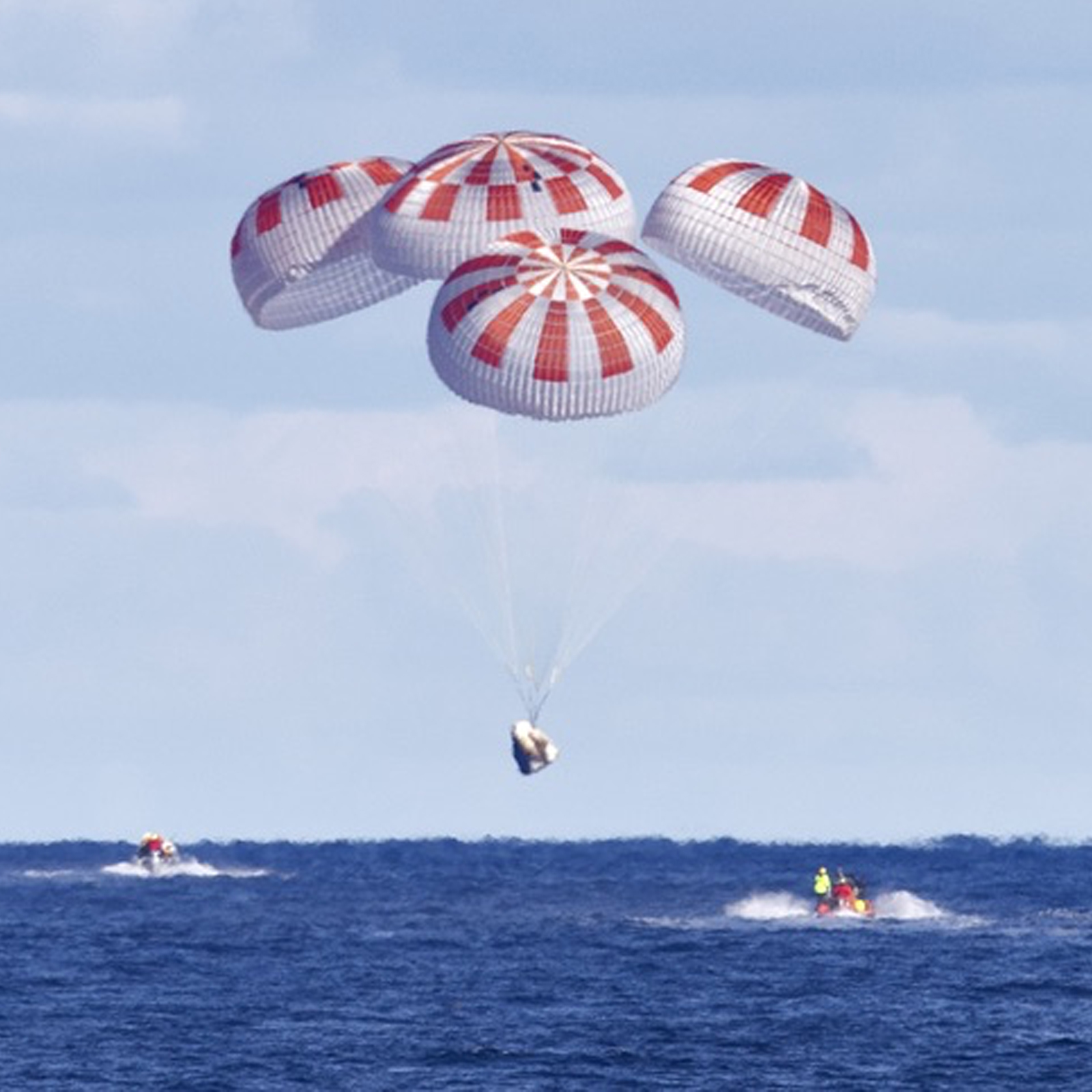Dragon
Sending Humans and Cargo Into Space
The Dragon spacecraft is capable of carrying up to 7 passengers to and from Earth orbit, and beyond. It is the only spacecraft currently flying that is capable of returning significant amounts of cargo to Earth, and is the first private spacecraft to take humans to the space station.
VIDEO
Crew Dragon Interior
Taking humans to space
In 2020, SpaceX returned America’s ability to fly NASA astronauts to and from the International Space Station on American vehicles for the first time since 2011. In addition to flying astronauts to space for NASA, SpaceX’s Dragon spacecraft can also carry commercial astronauts to Earth orbit, the ISS or beyond.
ENGINES
Draco
The Dragon spacecraft is equipped with 16 Draco thrusters used to orient the spacecraft during the mission, including apogee/perigee maneuvers, orbit adjustment and attitude control. Each Draco thruster is capable of generating 90 pounds of force in the vacuum of space.
| NUMBER OF ENGINES | 16 |
| THRUST IN VACUUM | 400 N / 90 lbf |
An array of eight SuperDraco engines provide fault-tolerant propulsion for Dragon’s launch escape system. In the unlikely event of an emergency, the eight SuperDraco engines can power Dragon half a mile away from the launch vehicle in less than eight seconds.
| NUMBER OF ENGINES | 8 |
| ESCAPE THRUST | 73 kN / 16,400 lbf |

DRAGON PARACHUTE SYSTEM
The Dragon spacecraft is equipped with two drogue parachutes to stabilize the spacecraft following reentry and four main parachutes to further decelerate the spacecraft prior to landing.